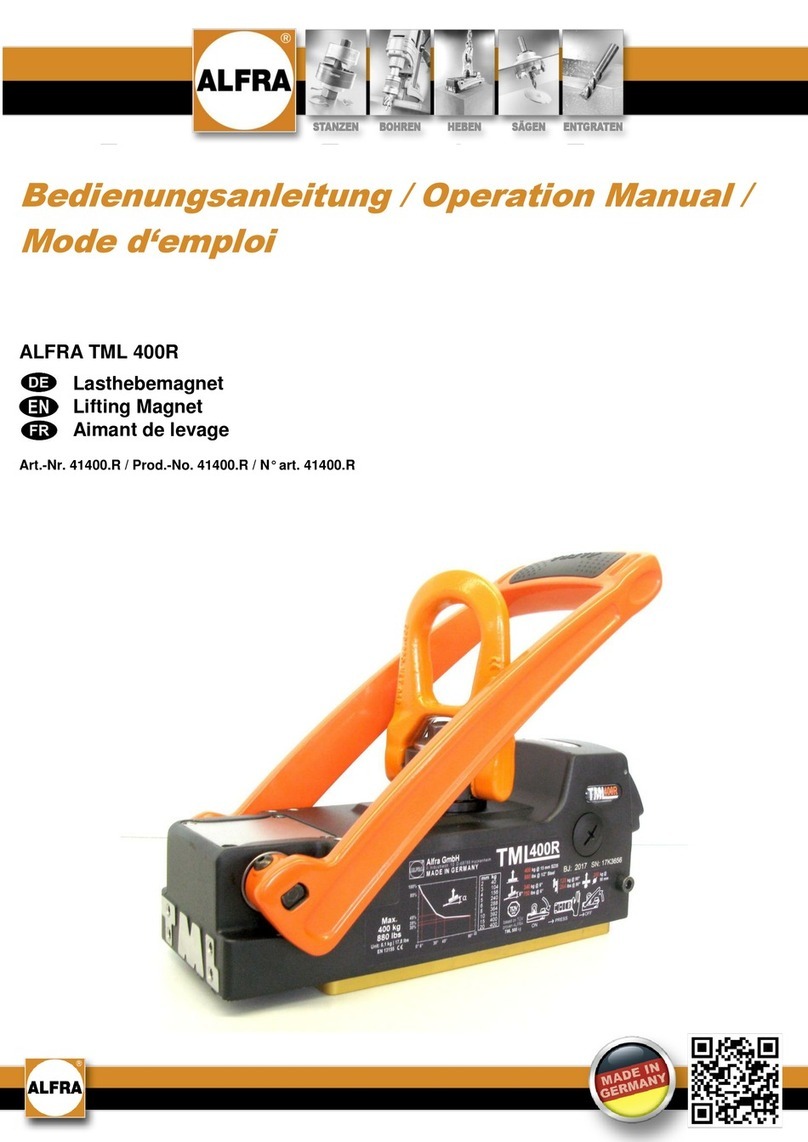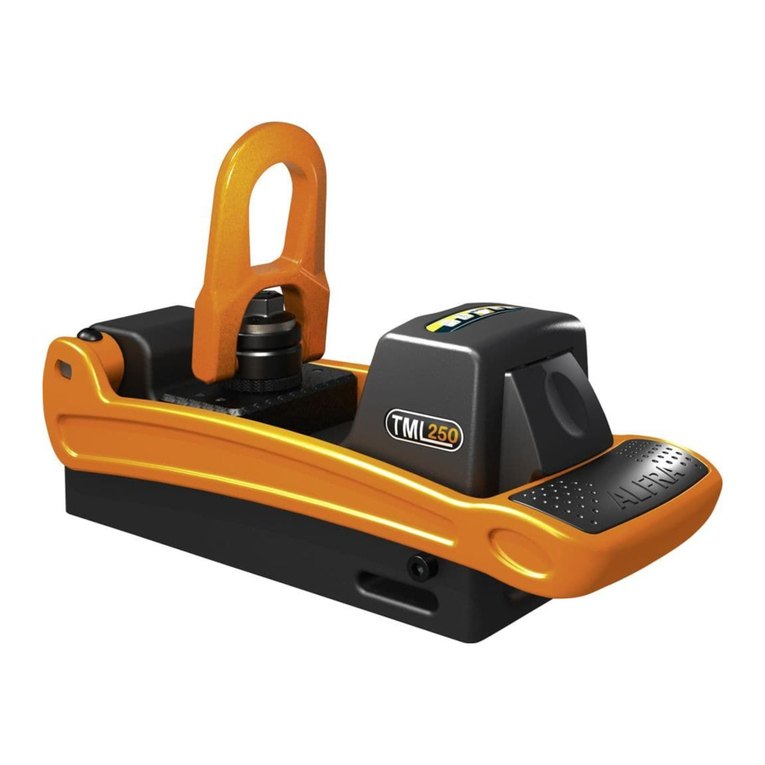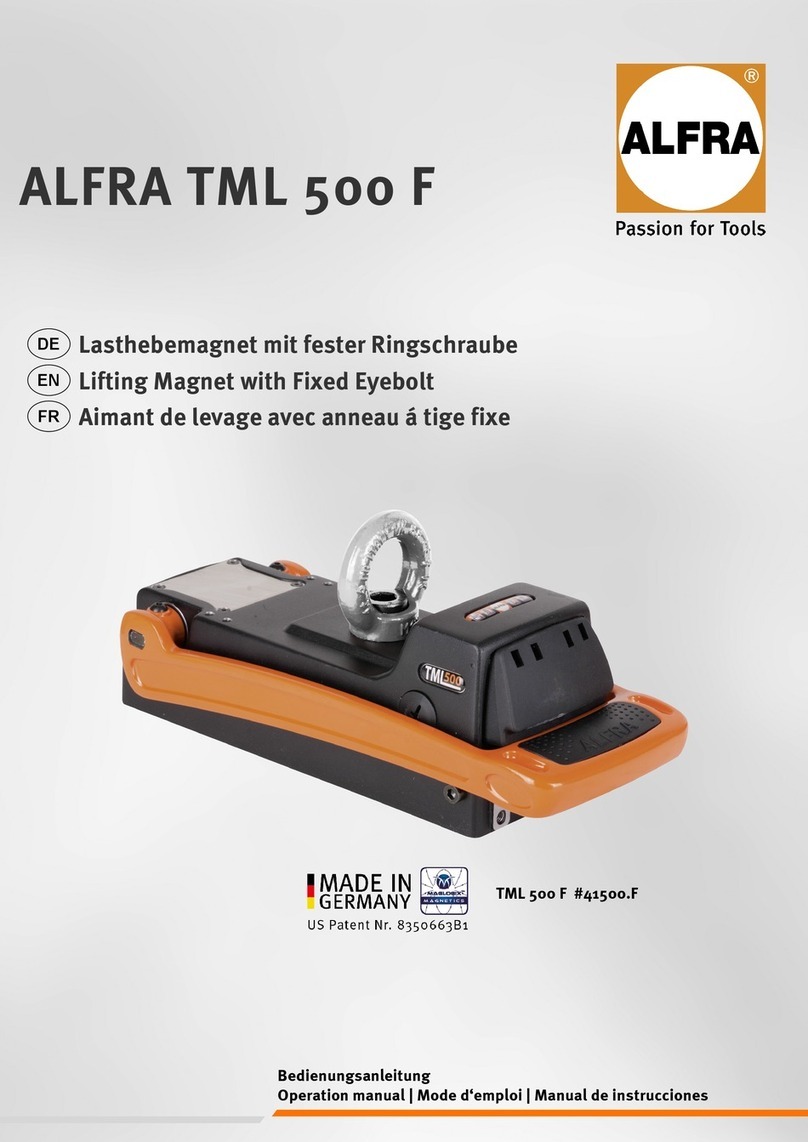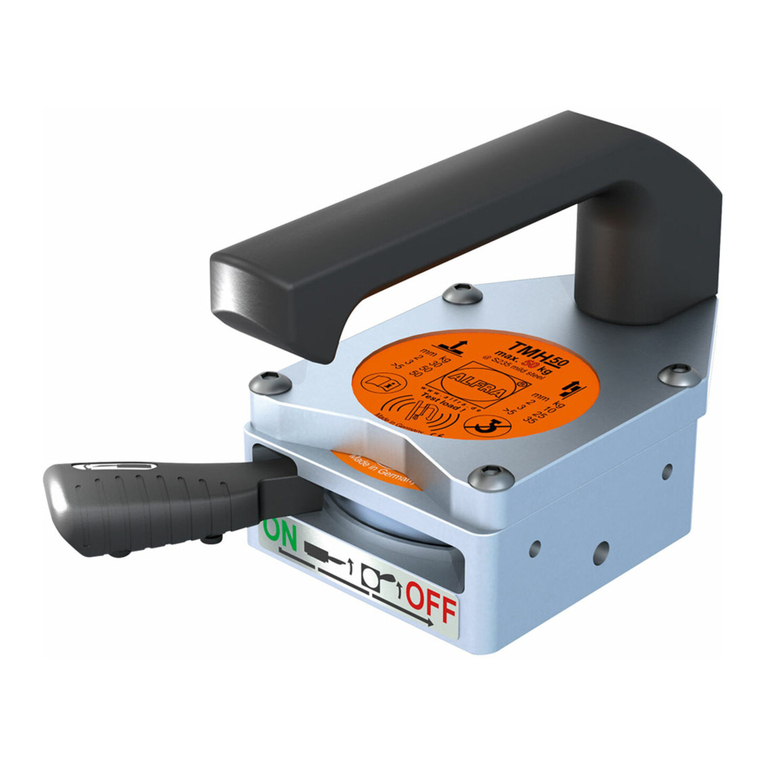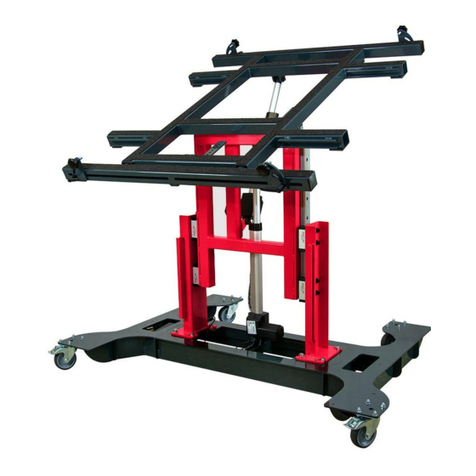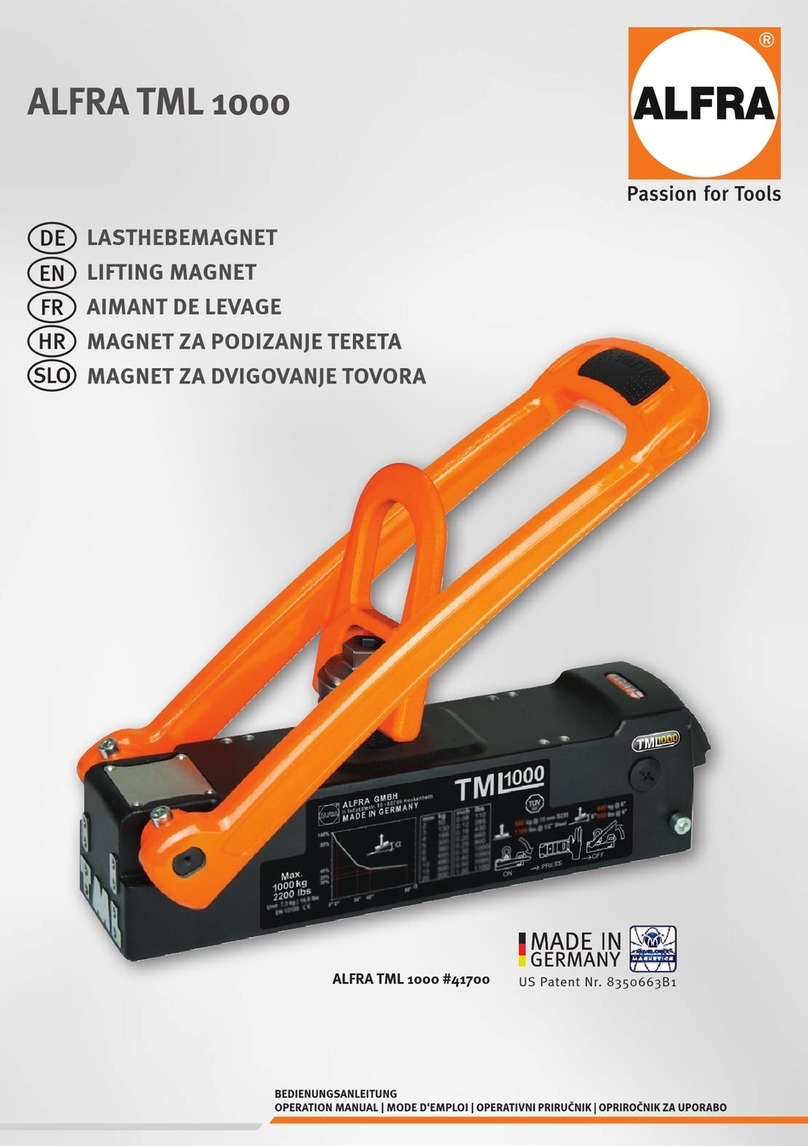
9
Grundläggande information om hantering av magnetiska lyftredskap
särskilt TML
Den magnetiska ytan är placerad på undersidan av lyftmagneten och innehåller flera magnetiska poler som
genererar den magnetiska hållkraften när den aktiveras. Den maximala hållkraften som kan uppnås beror på olika
faktorer som förklaras nedan:
Materialtjocklek
Lyftmagnetens magnetiska flöde kräver en minimal materialtjocklek för att strömma helt in i lasten. Under denna
minsta materialtjocklek minskas den maximala hållkraften beroende på materialtjockleken. Konventionella
omkopplingsbara permanentmagneter har ett djupt penetrerande magnetfält som liknar trädkranrötter och kräver
en stor materialtjocklek för att uppnå maximal hållkraft. TML-magnets kompakta magnetfält liknar en grund rot och
uppnår maximal hållkraft även när den används på tunna material (se tabell 2 i denna bruksanvisning).
Material
Varje material reagerar på olika sätt vid inträngning av magnetfältlinjerna. Lyftmagneternas bärförmåga bestäms
med hjälp av ett koldioxidsnålt material. Stål med högt kolinnehåll eller vars struktur har förändrats genom
värmebehandling har en lägre hållkraft. Skumade eller porösa gjutna komponenter har också en lägre hållkraft så
att lyftmagnetens givna bärförmåga kan nedgraderas på basis av följande tabell 1.
Tabell 1
Magnetisk kraft i%
Olegerat stål (0,1-0,3% C-innehåll)
Olegerat stål (0,3-0,5% C-innehåll)
Gjutstål
Grått gjutjärn
De flesta rostfria stål, aluminium, mässing
Ytkvalitet
Den maximala hållkraften hos en lyftmagnet kan uppnås i händelse av en sluten magnetisk krets där
magnetfältlinjerna kan anslutas fritt mellan polerna, vilket skapar ett högt magnetiskt flöde. Till skillnad från
exempelvis järn har luft mycket högt motstånd mot magnetiskt flöde. Om ett slags ”luftspalt” bildas mellan
lyftmagneten och arbetsstycket minskas hållkraften. På samma sätt utgör färg, rost, ytbeläggningar, fett eller
liknande ämnen alla ett utrymme eller ett luftspalt mellan arbetsstycket och lyftmagneten. En ökning av ytjämnhet
eller ojämnhet påverkar också den magnetiska hållkraften. Referensvärden finns i prestandatabellen för din
lyftmagnet.
Lastmått
När du arbetar med stora arbetsstycken som balkar eller plattor kan lasten deformeras under lyften. En stor stålplåt
skulle böjas nedåt vid ytterkanterna och skapa en krökt yta som inte längre har full kontakt med magnetens botten.
Den resulterande luftspalten minskar lyftmagnetens maximala bärförmåga. Ihåliga föremål eller de som är mindre
än den magnetiska ytan kommer också att resultera i mindre hållkraft.
Lastjustering
Under lasttransport måste man se till att lyftmagneten alltid är i arbetsstyckets tyngdpunkt och att lasten respektive
lyftmagneten alltid är horisontellt inriktad. I det här fallet verkar lyftarens magnetiska kraft med sin utlösningskraft
vinkelrätt i förhållande till ytan, och den maximala nominella bärförmågan uppnås med 3: 1 standard
säkerhetsfaktor.
Om arbetsstyckets och lyftmagnetens läge ändras från horisontellt till vertikalt, körs lyftmagneten i skjuvläge och
arbetsstycket kan glida bort åt sidan. I skjuvläge minskar den bärande kapaciteten beroende på
friktionskoefficienten mellan de två materialen.
Temperatur
De högeffektiva permanentmagneterna som installeras i lyftmagneten kommer att förlora sina magnetiska
egenskaper oåterkalleligt från en temperatur över 80 ° C (180 ° F), så att den fulla bärförmågan aldrig uppnås igen
även efter magneten har svalnat. Observera specifikationerna på din produkt eller i bruksanvisningen.












